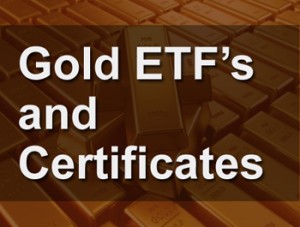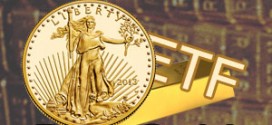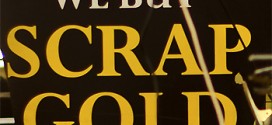
Looking to do some light or heavy investing in gold? This article takes a closer look at investing in ETFs and Certificates.
If you’re investing in gold, there are two ways to do it. Direct hard metal investments or investing in “paper” gold. Hard metal investments involve owning, storing and securing the gold metal itself. This could be through gold bullion bars and ingots, through bullion coins or investment grade legal tender gold coins. “Paper” gold investments break down into 3 different categories: gold stocks, which are for the gold mines themselves, futures and options which involves the possible purchase of gold and gold ETFs (also CEFs and ETNs) and Certificates which is a different way to own hard metal.
Gold type ETFs, or Exchange Traded Funds, represents a group of funds that directly owns gold as an asset. While this puts you one step away from directly owning gold as a metal, it also puts you into the scope of the stock market, since ETFs trade like stocks. While the price of these ETFs closely tracks the price of gold, they can be traded quickly and easily, unlike the gold metal they represent. ETFs and their sister fund types like Closed-End Funds (CEFs) and Exchange Traded Notes (ETNs) function in much the same way, although ETNs are backed by derivatives instead of being directly backed by gold.
Although riskier, gold certificates are also “closer to home”. Some banks may issue gold certificates as a way to monetize vaulted reserves of gold on hand (non-fungible) or pooled gold resources (fungible). These certificates are theoretically directly pegged to the stored gold, however it is not guaranteed, especially if there is a run on the issuing bank’s gold on deposit. Also, these gold certificates should theoretically be tied directly to one serialized bar of gold but there are few checks in place to ensure a bank doesn’t improperly assign the same bar to multiple certificate holders.
Having the hard metal in your hands can be both comforting and grounding. However, if you want to be able to move your investment dollars around quickly, hard metal isn’t the way to do it. By handing the metal gold in paper form through ETFs and gold certificates, you keep your money somewhat directly tied to metal gold while eliminating the hassles of dealing with hard metal storage, security and liquidization.
 Gold Value GoldValue.co
Gold Value GoldValue.co






